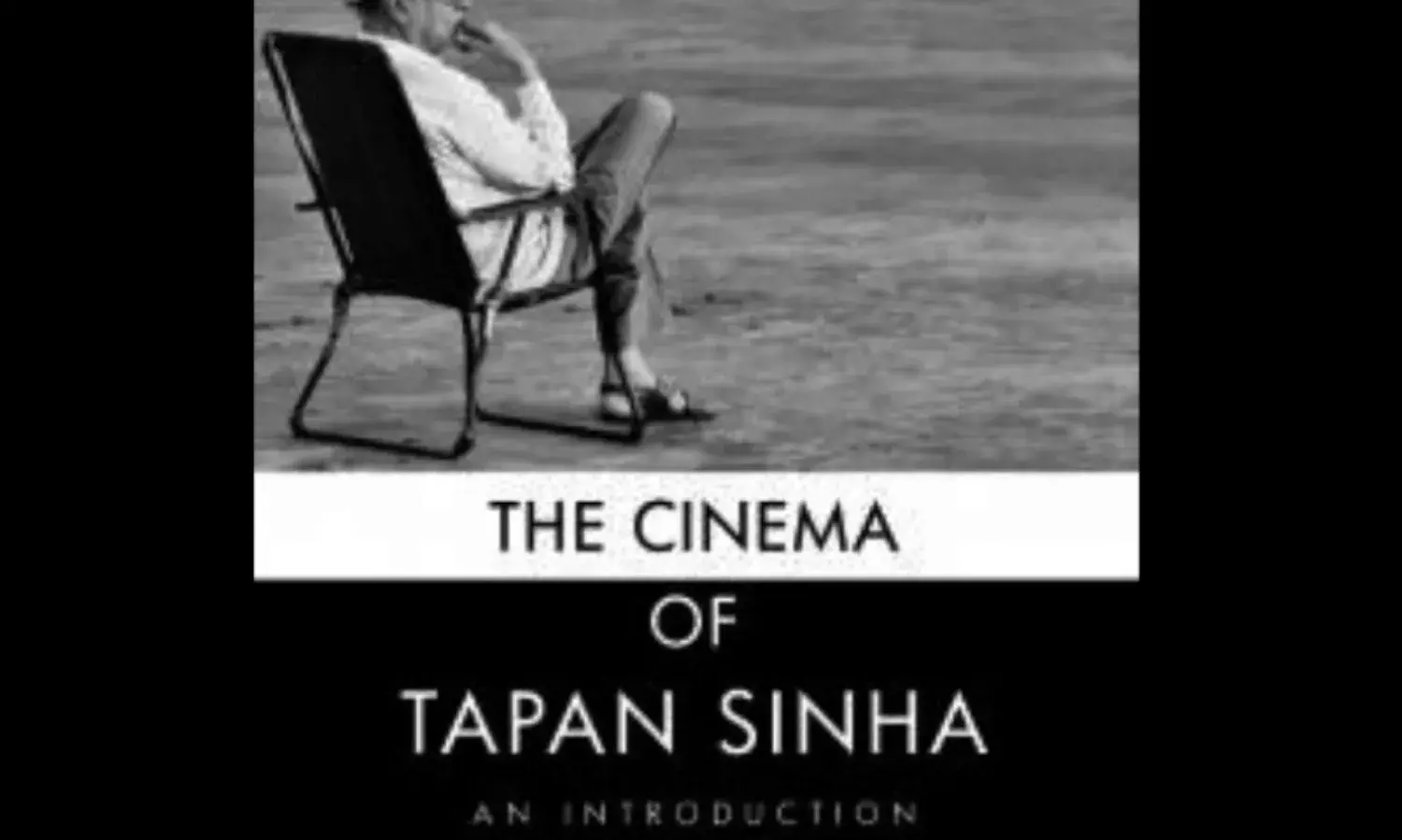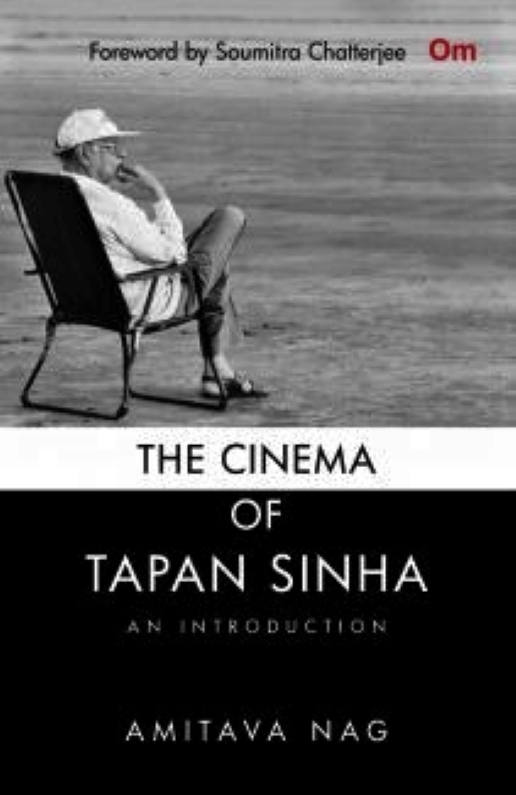The Cinema Of Tapan Sinha - An Introduction By Amitava Nag
Book review

Whenever someone decides to write a detailed biography of a noted filmmaker the reviewer has known quite well, both personally and through his films, the first response is – why did it not occur to me to write this book first? But when the said author is also a close friend and fellow-film buff, one accepts it with a sense of warmth and pleasure, hoping for the best.
This is how I reacted when Amitava Nag, a prolific author who has authored not less than two books on Soumitra Chatterjee and one on Satyajit Ray’s Heroes and Heroines sent me his latest book, The Cinema of Tapan Sinha – An Introduction published by Om Books International. I have absolutely no doubt about Nag’s sincerity and the honesty with which he approaches every work he decides to commit himself to and this book, happily, is no exception.
The USP of this book lies in that this is the first ever book in English on Tapan Sinha, whose contribution to the history, quality and quantity of Bengali cinema has never been given the due it deserved. His enormous volume of significant work has been sucked into the vortex of marginality because of the iconisation of the triumvirate of Indian Cinema – Satyajit Ray, Mrinal Sen and Ritwik Ghatak.
At a cinematic tribute paid in 2009 to Tapan Sinha following his demise, Tarun Majumdar, another stalwart in Bengali cinema, said, “Tarun Majumdar, while celebrating the memory of this prolific filmmaker, lamented the fact that in its obsession with the three stalwarts of Bengali and subsequently, international cinema, namely, Satyajit Ray, Mrinal Sen and Ritwik Ghatak, intellectuals, cineastes and critics have completely ignored the works of other distinguished and talented filmmakers.
Tapan Sinha is one of them. The works of peer artistes like the late Ajoy Kar and Rajen Tarafdar have almost been rendered invisible thanks to the average Bengali’s passionate obsession for the Bengal triumvirate, without meaning to derogate the works of the three stalwarts in any manner.”
Among the several interviews with this writer, Sinha once said, “In an interview to this writer, he said, “Cinema has forever held a holistic, yet unexplainable attraction for me. I am aware that the definition of cinema goes on changing with time. To me, cinema is honest entertainment expressed and stated without hurting human sensibilities in any way. I do not believe in the academics of cinema.
I believe in keeping all the windows of my mind and world open to get a global perspective on life. The word ‘entertainment’ is a relative term. For me, the films I have made over the years define entertainment. Cinema cannot die, in India or anywhere else. Until there is one hundred percent education among the masses, cinema will remain their only source of information, education and entertainment. Cinema may be dying in the UK because of the rise in education and in other forms of culture, not in India.
Television has failed to offer alternative entertainment. I took up sound mainly because I felt it would help me get into direction more easily because in my days, we did not have any film institute. I graduated with science. To get into Sound one had to have a background in science.”
Amitava’s book practically spills over with the results of his painstaking and long research, which was challenging, considering the little available research and earlier work done on Tapan Sinha, originally written in Bengali which Nag, fluent in both Bengali, his mother tongue, and English, translated into English himself.
The book is divided into fourteen chapters followed by a list of the many awards Sinha and his films have won between 1956 and 1994, and a detailed filmography. The first three chapters – The Initial Years followed by Growing Up in Bhagalpur and Move to the Big City sheds a great deal of light on the formative years of his birth, growth in a very progressive, cultured and musically inclined family with focus on his close bonding with his eldest sister Uma and her husband when he was shifted to her place for better educational opportunities in fluid and flowing language through which for the first time perhaps, the reader will get a glimpse into the formative years of one of the greatest filmmakers in Indian cinema. The bonding was so strong and deep that it spilled over to Uma’s son Sidhhartha Kumar Ghosh who has offered many unknown snippets on his favourite maternal uncle, fleshing out the great filmmaker’s character and evolution.
Tapan Sinha and Arundhati Devi’s son, microbiologist Anindya Sinha, a professor at the Indian Institute of Science also makes his rarest of rare appearances with snippets about his father. London Calling describes in detail Sinha's stay in London which however, he admits did not teach him much about cinema “apart from the work ethic which helped Tapan in his filmmaking career, the other benefit of his tenure at Pinewood was the opening up of a plethora of world cinema before him.” (P.37)
Sadly, many of his films are lost to time for lack of proper preservation underscored in the book. Among these are his first directorial film Ankush, Louha Kapat, an anthology of stories of criminals based on the first part of Jarasandha’s four-part novel Louha Kapat.
I recall being one of the few who had the good fortune of watching this film at a Bombay theatre and was mesmerized with the performance of Kali Banerjee, convicted of murder, who, however, was fond of birds and of little children. This was the only film of Tapan Sinha which featured a young Mala Sinha. I also watched Kala Mati in a Calcutta theatre. I was in school at the time but the B &W cinematography in both films remain archived in my memory till this day.
Nag divides the other chapters by marking them as Sinha’s exploration of films based on classical literature ranging from Rabindranath Tagore through Tarasankar Bandopadhyay, his involvement with some films specifically targeted at children with children as major characters, and his not very successful foray into Hindi films a few of which were Hindi versions of his own Bengali originals.
Nag described in great detail, the back stories of three Tagore stories Sinha turned into films – the extremely successful Kabuliwalla, the magical realism-filled Kshudita Pashan and the beautiful Atithi. Nag also details the sudden illnesses and one near-death accident Sinha suffered from, only to get up and back to work as soon as he could.
The book’s USP lies in two, extremely significant chapters which happen to be Nag’s individual perspective. One of them is entitled Dealing with Contemporary Reality and the other is The Conscience Trilogy – The Hopeless Paranoia of the Eighties which sheds light on Sinha stepping out of his regular and fond passion for literature to step into films that also etched out subtly and not-so-subtly, his political beliefs which was not at all liked by the powers-that-be and he often had to face hurdles before and after a given film’s release.
The best quality of the book lies in Nag’s brilliant contextualization of the filmmaker he writes about – placing him against his socio-political-cultural context not just in one or two chapters but right through the book without really being brazen about it of coloring it with his personal take on the filmmaker but rather, letting his reader come to his/her own conclusion.
The book opens with a three-and-a-half page with quotes on Sinha by eminent personalities of cinema which, to my mind, is completely superfluous because in my opinion, the book stands complete unto itself without the certification by others. I remain extremely grateful to Tapan Sinha because unlike most people in the film industry, Sinha actually forced one of his producers to pay the arrears for everyone connected with the making of Satabdir Kanya adding that he would not come to the studio floors until all dues were cleared. I happened to be one of the many.
The conflict that happened between Uttam Kumar and Tapan Sinha over the casting of Banchharamer Bagan has a completely different version by Supriya Devi who placed the blame squarely on Sinha’s shoulders accusing him of betraying the trust of a much-loved friend -Uttam Kumar. No one knows what the truth is but today, what matters is the film and its maker and both will go down in the annals of Bengali cinema history.
Sinha and I won the National Award together in 1991. I was surprised when, during the rehearsals in the morning, Sinha was requested to stand in as the President on the proscenium and hand over the proxy awards. Sinha, the over-modest person that he was, readily agreed. He picked his award the same evening for one of his best films – Ek Doctor Ki Maut.
This is a must-read book on one of the most talented filmmakers Indian cinema has produced and so, is fit for the archives. The plethora of photographs and poster prints certainly add value to the book. The cover, of course, is beautiful.
Take a bow Amitava, you have really done him proud.




